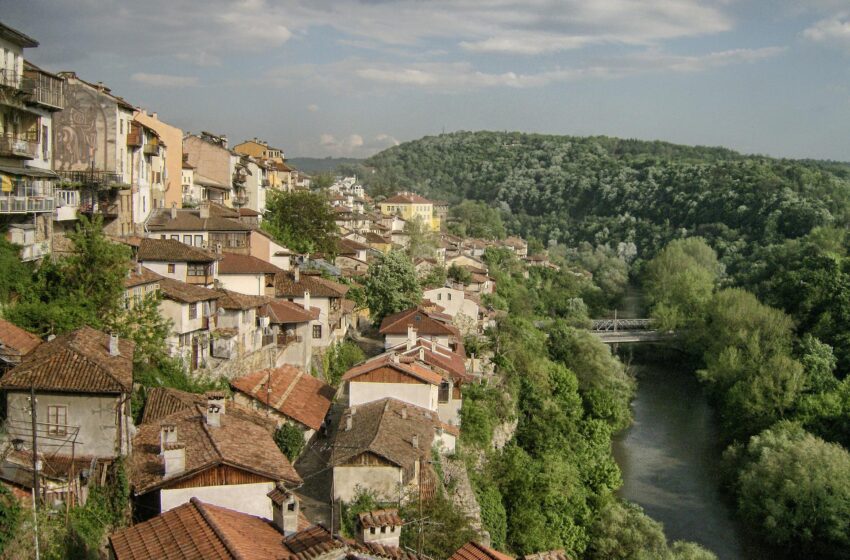
Bulgaria’s Only Travel Guide You Need For A Great Trip in 11 Easy Steps
- Destinations Europe
Cruisit Team
- June 18, 2022
- 0
- 4721
- 75 minutes read
Bulgaria’s Background
Bulgarians today are descended from Central Asian Turkic tribes that blended with Slavic populations to establish the first Bulgarian kingdom in the late 7th century. Centuries later, Bulgaria experienced its first international contact with the Byzantine Empire, which was followed by the Ottomans. Northern Bulgaria gained autonomy in 1878, and the entire country gained independence in 1908. Finally, with the Soviets, after choosing the losing side twice in both world wars, until 1990, when communist dominance ended and democracy was established.
With Byzantine domination, 500 years of Ottoman authority, and Soviet influence, one would expect the country to have run out of steam and lost its identity. However, the Bulgarian entity managed to endure. Nevertheless, with each conquest or influence, a large amount of foreign culture was imported into Bulgarian territory. The Byzantines introduced them to Eastern Orthodoxy, symbolism, and monasteries, the Ottomans brought Islam, kebabs, and mosques, the Soviets, heavy industry and concrete monstrous construction; and the West, corruption and unfettered capitalism. What more could you ask from a single country?
Aside from Byzantine, Ottoman, and Soviet remains, the country also boasts a number of Greek and Roman sites. It has beautiful monasteries and mosques, as well as centuries-old Slavic and Turkish populations. It is inhabited by hardy mountain people who can withstand years of occupation and emerge unhurt. It is populated by individuals who identify as Bulgars, Gypsies, or Turks. It boasts beaches to rival those of the Mediterranean, as well as untamed mountains, deep gorges, snowcapped peaks, roaring rivers, glacial lakes, and vast woodlands where bears, wolves, and lynxes still roam free. It sells fine wine and enormous plastic bottles of beer at ridiculously low prices. It is endowed with food that is similar to Greek but not really, similar to Turkish but aren’t, and so distinctly Bulgarian.
The country is split into five geographical areas. You’re more likely to visit the northwest region, which is home to the country’s capital, Sofia. Southwest Bulgaria is a hilly region that is also a winter sports paradise. Northern Thrace lies on the lowlands and includes several historical cities, the most well-known of which being Plovdiv. Many resort villages on Bulgaria’s Black Sea Coast get little tourists. There are several major port cities as well, such as Varna and Burgas. Many villages and woodlands line the Danube River in Central Northern Bulgaria.
Bulgaria’s strongholds and ruins reverberate with historical whispers. Neolithic towns have been discovered in caves hidden in Bulgaria’s river-sculpted wilds. The enigmatic Thracians left behind spectacular gold and silver hauls, as well as tombs that may still be visited today. The Romans created towns on a grand scale, with bathhouses, fortifications, and amphitheatres that lie casually in the middle of modern cities like Varna and Plovdiv. Tsars marched along the ramparts of the old capital Veliko Târnovo’s Tsarevets Fortress. These histories are still significant today, with Thracian art and Bulgaria’s victory over the Ottomans inspiring.
“A country that is known for its mountains that inspire the soul, with beautiful beaches, and towns that pulse with life and art. Captivating adventures are assured in Bulgaria’s enticing combination of nature and history.“
Bulgaria is a Black Sea nation in the Balkans. It is one of Europe’s most under appreciated countries, yet it has a lot to offer. Bulgaria is a surprisingly diversified nation with winter sports, beautiful beaches, and churches and culture in which to immerse oneself. Because it is less popular than other European nations, traveling here seems like you’ve discovered an unspoiled, unexplored, unique paradise. Although winters might be rather frigid, summers are extremely nice. The scenery in the vicinity may also be extremely lovely. There are mountains dotted with towns, beaches lined with resorts, and an old-world rural landscape that you won’t find anywhere else in Europe.
Nobody visiting Bulgaria will be unmoved by its religious art, which ranges from massive gold-domed buildings to minute icon paintings. Visitors and pilgrims go to Sofia’s Aleksander Nevski Church and the 10th-century Rila Monastery, while Tryavna’s wood sculptures and Bachkovo’s apocalyptic paintings are gaining popularity. However, even the smallest Orthodox churches have much to admire: emotional paintings of saints, sometimes set in carved wooden screens (iconostases), are enchanting when bathed in shimmering candlelight. The backgrounds of many religious buildings are almost as spectacular: granite cliffs, raging streams, and lonely mountain routes.
Hikers, mountain bikers, and skiers are drawn to Bulgaria’s wild landscapes. Seven mountain ranges crisscross the land, with glacial lakes sparkling amid the snow-dusted summits and tangles of forest concealing wolves, bears, and lynx, a glimpse of Europe’s prehistoric past. Mist-cloaked views in the Stara Planina range and dawn from Bulgaria’s second-highest peak, Mt Vihren, are accessible by networks of paths and hizhas (hiking huts) (2915m). Between walking through the Rodopi villages, roaring through ski fields in Bansko, and birding in Pirin National Park, Bulgaria offers much to please (and fatigue) outdoor enthusiasts.
Traveling throughout the nation by bus is the most affordable and convenient option. This is the most prevalent and quickest mode of transportation. Trains are significantly cheaper than buses, but they are also slower and have a shorter range. Some places in the countryside or higher in the highlands need the use of a rental car. This can be accomplished in most big cities, including Sofia, although it can be costly, more on this topic below.
In general, Bulgarian prices are fairly modest, with people from both ends of the backpacker and luxury spectrum able to find what they need. Restaurants are often inexpensive, and pizza is a cheap alternative practically everywhere. Hotels are less expensive than in many Eastern European nations, and most big towns feature at least a handful of hostels for people on a low budget. Read on to learn all you need to know before visiting Bulgaria. Learn about things to do in Bulgaria, as well as helpful advice and recommendations for your vacation.
- Visit Alexander Nevsky Cathedral, the UNESCO-listed Boyana Church, Hagia Sophia Church, and Sveti Sedmochislenitsi Church. Out of church.
- Admire the charming tiny town of Koprivshtitsa (оривиа) with its typical Bulgarian architecture.
Sit in Plovdiv’s old Roman amphitheater, and visit one of its numerous historic house museums and art galleries. - Visit the Banya Bashi Mosque, the Sofia Synagogue, the National Museum of History, or take a walk through one of the numerous parks, and when you’re done, treat yourself to some authentic Bulgarian cuisine at a mehana (tavern)
- Take a bus to Rila Monastery (илски манастир), then hike through Rila National Park (аиoнален арк “ила”).
- In the winter, visit Bansko (анско) for some skiing.
- Get a tan at one of the several Black Sea beach resorts, which include crowded Varna (aka aрна), overrated Sunny Beach (лнев р), historic and beautiful Sozopol (aka ооол), UNESCO heritage Nesebar (есер), isolated Silistar Beach, and charming Ahtopol (тоол).
- Visit the strange communist Buzludzha Monument (улуда) on top of the mountain that bears its name.
- Stroll about Veliko Târnovo (елико рново), the old Bulgar capital.
- Take in the Kaleto Fortress in Belogradchik (eлорадик), then explore the strange rock formations just beyond the town.
- Melnik (елник) is a historical town with several surrounding attractions.
- Pirin National Park will be more appealing to experienced hikers.
- Dare to cross Devil’s Bridge in Ardino to cross the Arda River.
- Look up at the sky from Prohodna Cave’s eye openings.
- If you want a better option than Sunny Beach, go to Sinemorets.
- Bulgaria is a member of the EU and a notional member of the Schengen zone, thus there is no need to bother about obtaining a visa regardless of whether you may enter visa-free or have a valid Schengen visa.
- Bulgaria is a wonderful budget-friendly skiing destination!
- Bulgaria is likely one of the least expensive nations in Europe to visit.
- Because English isn’t generally used, a Bulgarian phrasebook will come in handy, as will speaking Russian and some German with the elderly.
- Bulgarians take squatting seriously, and you will most likely learn to squat “like a true Slav.”
- You could be perplexed by the prolonged head shake (which signals a “NO”) followed by a “da,” which signifies a “YES.”
- Roses may be found practically everywhere.
- Despite being a member of the EU, Bulgaria does not utilize the Euro and instead uses the Bulgarian lev (BGN).
- Although renting a car will be quite convenient, you may still ride the bus.
- Keep to the left of the lane when driving because most of the right lanes are damaged; the left lane, not the left side of the road.
- Unlike in the United States and most of the European Union, gas stations in Bulgaria provide full service, so you won’t have to leave your car.
- If you opt to drive to Sofia, expect severe traffic, and always keep your car’s lights on whether it’s sunny, dark, or pouring.
- Even if you don’t speak the language, talk to the people and go meet them. They are quite kind and inviting.
Crime & Scams in Bulgaria
Bulgaria’s police and other organizations fight crime in the country. In general, Bulgaria is very safe. The country receives good rankings on the Global Peace Index 2020; it has a relatively low level of significant crime; no major political upheavals, and no terrorist danger. Crime rates are low, with auto theft and break-ins being the most prevalent types of crime. Avoid the red light district at Pliska Hotel and the park areas around Lion’s Bridge in Lvov, where muggings do occur on occasion. Make sure any taxi you are riding is operating with the meter on. If you sense that the fare is getting super expensive, this is a sign to leave and grab another taxi. Taxi scams everywhere in the world are annoying, and Bulgaria has its fair share of them too.
Healthcare in Bulgaria While Traveling
Bulgaria’s healthcare system does not reach the norms of most Western European countries. Despite the fact that Bulgarian physicians and medical personnel are well qualified, the country’s health infrastructure has been underfunded, and many hospital buildings are in disrepair. Life Hospital, Sveta Marina Multiprofile Hospital, Sveta Anna Multiprofile Hospital, MBAL, Deva Maria MBAL, and Naval Hospital, on the other hand, are regarded as excellent. A medical checkup costs around 30 BGN (if paid in cash) and might go up from there.
Before every trip, make sure you are up to date on all routine vaccinations. Among the key recommended vaccines globally are chickenpox (Varicella), diphtheria-tetanus-pertussis (DTP), influenza (flu), measles-mumps-rubella (MMR), polio, and shingles. Obtaining immunization cards for Yellow Fever, Hepatitis A and B, Typhoid, Rabies, and Meningitis is important when traveling.
When visiting Bulgaria, you are required to purchase travel medical insurance, even if you come from the EU and have health insurance (EHIC). However, it is always important to have comprehensive medical coverage when traveling because you never know what you could encounter while overseas. If you forget to get it beforehand, you can grab one at the airport.
Bulgaria has a moderate climate, with warm, dry summers and mild winters.
Shoulder Season
The shoulder months of April to May and September to October are ideal for visiting Bulgaria since the weather is good and the rates are reduced. Spring in Bulgaria lasts from April through May and is incredibly gorgeous. The weather is pleasant, especially at the seaside, which benefits from a pleasant warm wind from the Mediterranean. Earlier in the season, the snow may still be melting, so expect some thawing. Expect occasional rain, particularly around May.
Prices will be lower during this season since visitors will not have arrived in large numbers following the winter.
Fall in Bulgaria is particularly gorgeous from September through October. The weather stays pleasant, but the evenings and nights get chillier. This is an excellent time to visit the beach or the mountains, as the weather is suitable for both. Rain will fall around October, so plan your trips appropriately. The advantage is that there aren’t as many people to obstruct your sight during these months.
High (Peak) Season
The main holiday season in Bulgaria is from June to August when there are a lot of visitors, notably in Sofia and the coastal districts. These are the warmest months in the country, and June is also the wettest. August is the warmest month of the year, with an average daily high of 29 degrees Celsius and a low of 19 degrees Celsius. The main holiday season in Bulgaria is from June to August when there are a lot of visitors, notably in Sofia and the coastal districts. These are the warmest months in the country, and June is also the wettest. Beaches will be crowded, lodging and flights will be pricey, and the weather will be somewhat hotter and more humid than last season.
Off-Season
Bulgaria’s low season lasts from November to March, and it corresponds to winter. Because there is so much snow, it is primarily low season across the nation, and most of the smaller towns will close. It is, nevertheless, the finest time to go skiing. The peak season for ski resorts is December to February, when the snowfall is even and thick. Winters in this nation is not for the faint of heart. Beginning in late November or early December, the weather in Bulgaria can become unusually chilly. There will be a lot of snow starting in December, falling throughout the nation.
However, if you want to escape crowds, experience authentic European winters, and travel on a budget, this is the time to visit Bulgaria. Keep in mind that many smaller communities may be closed to tourists or unreachable. Visit Bansko or Razlog; they will undoubtedly help you create many memories.
By Plane
A lot of tourists arrive through one of Sofia’s two airport terminals, while in the summer, many charter aircraft travel directly to the seaside cities of Varna and Burgas. EasyJet and Wizz Air offer frequent low-cost flights from London and other European locations to Sofia, as well as summer services to Varna and Burgas. Bulgaria Air, the national airline, services most of Europe, but there are no direct flights to or from North America or Australia.
By Train
There are regular flights between Sofia and Budapest, as well as Belgrade and Bucharest. Contact the Bulgarian State Railway, Balgarski Darzhavni Zheleznitsi, for further information.
By Car
Bulgaria has five land borders and strong international transport links. Popular routes include Bucharest to Veliko Tarnovo (5–6 hours) or Sofia (11 hours), and Thessaloniki to Sofia (10 hours), while trains from Istanbul cross the country, stopping in Plovdiv (11 hours) and Sofia (14 hours) before continuing to Belgrade.
Bulgaria may be reached from the north via Romania, the west via Serbia and North Macedonia, and the south via Greece and Turkey. From Romania to Bulgaria, the New Europe Bridge connects Calafat and Vidin, and additional crossings include Giurgiu to Ruse, Negru Vodă to Kardam, and Vama Veche to Durankulak. The Dimitrovgrad-Kalotina crossing connects Serbia and Bulgaria. Zajear and Strezimirovci are two more crossing places.
By Bus
Eurolines operates regular bus services from several major European cities to Sofia and has ticket counters in Sofia, Plovdiv, Varna, and Burgas.
By Boat
Bulgaria’s primary ports, where you may dock your boat, are Bourgas and Varna. Make sure you learn about the maritime regulations and laws to be prepared before heading to Bulgaria and adhere to them when visiting the country.
By Train
Bulgarian State Railways can bring you to most locations; trains are on time and the tickets are reasonable. Express services (ekspresen) are limited to main routes, while Rapid (burz vlak) trains may be found on all but the most basic branch lines. Use them instead of the snail-like patnicheski services whenever feasible. Long-distance or overnight trains provide low-cost couchettes (kushet) and/or sleepers (spalen vagon). Seat reservations (zapazeni mesta) and tickets are required for them on all expresses and many rapids (bileti). You must request a seat in a non-smoking carriage (myasto za nepushachi) when making your reservation.
Because railway station ticket offices only sell tickets on the day of travel, it is best to acquire an advance ticket from a railway booking office on weekends and during the summer (byuro za bileti). International tickets must be purchased in advance through the Rila Agency (www.bdz-rila.com), which has branches in all major cities. The majority of stations have left-luggage offices (garderob). InterRail and Balkan Flexipass are valid, however buying rail tickets on the spot is generally cheaper.
By Car
For the sake of mobility, the ideal method to tour Bulgaria is by automobile. Rates for a rental car in Sofia begin at $12 per day but often begin at $27 per day. The Hyundai Accent is the most popular car model to rent in Sofia. All tenants must have a valid driver’s license that has been valid for at least one year, as well as an ID or passport. If your license is not in English, German, or French, you will additionally require an international driving permit. To hire a car in Bulgaria, you must be at least 20 years old (the age varies depending on the automobile type) and have held your license for at least one year. Young drivers under the age of 25 may be subject to a fee.
While driving, no permitted blood alcohol concentration is available. Child seats are required for children under the age of two. Bulgarian drivers are aggressive, which can make driving difficult. Cars are as dangerous as drivers since they are generally old and poorly maintained. Driving in Bulgaria is not risky and is no worse than driving in France or Poland (for example); some Bulgarian drivers just prefer to drive recklessly.
By Taxi
In Sofia, there are more than 4800 taxis. The majority of them work for numerous large cab businesses. There are many tiny businesses and individual drivers registered as firms. The automobiles are required by law to be yellow, but there are few exceptions: some are gold, and there is a new eco-friendly taxi firm in Sofia called Green Taxi, which drives green-colored Toyota Prius hybrid cars with free Wi-Fi Internet connection.
All taxis should have a taxi meter that calculates the fare and a pricing list on the windshield, side windows, or/and dashboard. When starting the engine, the driver should switch on the meter. Taking a cab without a meter is not in your best interests. The driver will determine the fee based on his own discretion and the fact that you are a foreigner, and you will be charged far more than usual.
Taxi services in Bulgaria are often quite inexpensive in contrast to other EU nations. The fare is determined by four or five elements and is estimated by a taxi meter in the cab. Fares range between 5 and 15 euros, depending on how distant your destination is.
By Bus
Public transportation in Bulgaria is affordable, although it is sometimes sluggish and not necessarily clean or pleasant. Traveling by bus (avtobus) is typically the shortest way to go from one large town to another. When traveling between towns, you may often buy tickets (bileti) at the bus station (avtogara) at least an hour in advance, although on some routes, they are only sold when the bus arrives. Tickets are frequently sold by the driver on rural routes.
By Metro
Sofia will has three operational metro lines since August 2020! However, the metro network has grown the most in the last ten years, with two additional lines being completely operational (inaugurated in 2012 and 2020) and a longer first line that can now carry you all the way to Sofia Airport.
By Cycling
Cycling is best avoided in Bulgaria’s busy cities, where bike lanes are few and far between, but the country’s peaceful smaller roads connecting towns and villages are a treat for cyclists. Zig-Zag Holidays in Sofia (w www.zigzagbg.com) is one of the most dependable bike rental companies in Bulgaria, and they also arrange scheduled excursions.
SIM Cards & Calls in Bulgaria
Bulgaria has 4 mobile operators, and a Bulgarian SIM card costs between 6 BGN (3.50 USD) and 50 BGN (29 BGN). A1 offers four SIM cards (6 BGN – 50 BGN), Telenor offers five (8 BGN – 40 BGN), Vivacom offers three (7 BGN – 20 BGN), and T.com (previously Max Telecom) offers them for free if you purchase a plan (starting from 20 BGN). All SIM cards come with initial benefits like credit, data, minutes, and/or SMS, so those starting costs are surely not terrible by European standards. Sim cards may be obtained from authorized retailers in town or at the airport.
You also have the option of purchasing a prepaid eSim card like from Airalo, SimCorner, or Nomad. The companies provide data-only plans to put on a phone that is eSim ready, so make sure your phone is compatible. It is also possible to opt-in for a WiFi Hotspot from Solis. Check before you travel because they service certain destinations. Airalo by far has the most coverage of almost 180 countries.
Local Internet & WiFi in Bulgaria
Sofia’s internet speeds and connection dependability are frequently listed among the fastest in the world. In Bulgaria, mobile internet connections averaged 80.86 Megabits per second (Mbps). Fixed internet connections were somewhat slower, with speeds averaging approximately 73.89 Mbps. You may connect to Wifi networks supplied by many of the hostels, hotels, and flats you have leased. Nowadays, most major tourist destinations provide free WiFi. Museums, shopping malls, landmarks, and even parks provide free WiFi stations. However, they are not always secure.
Top Places in Bulgaria
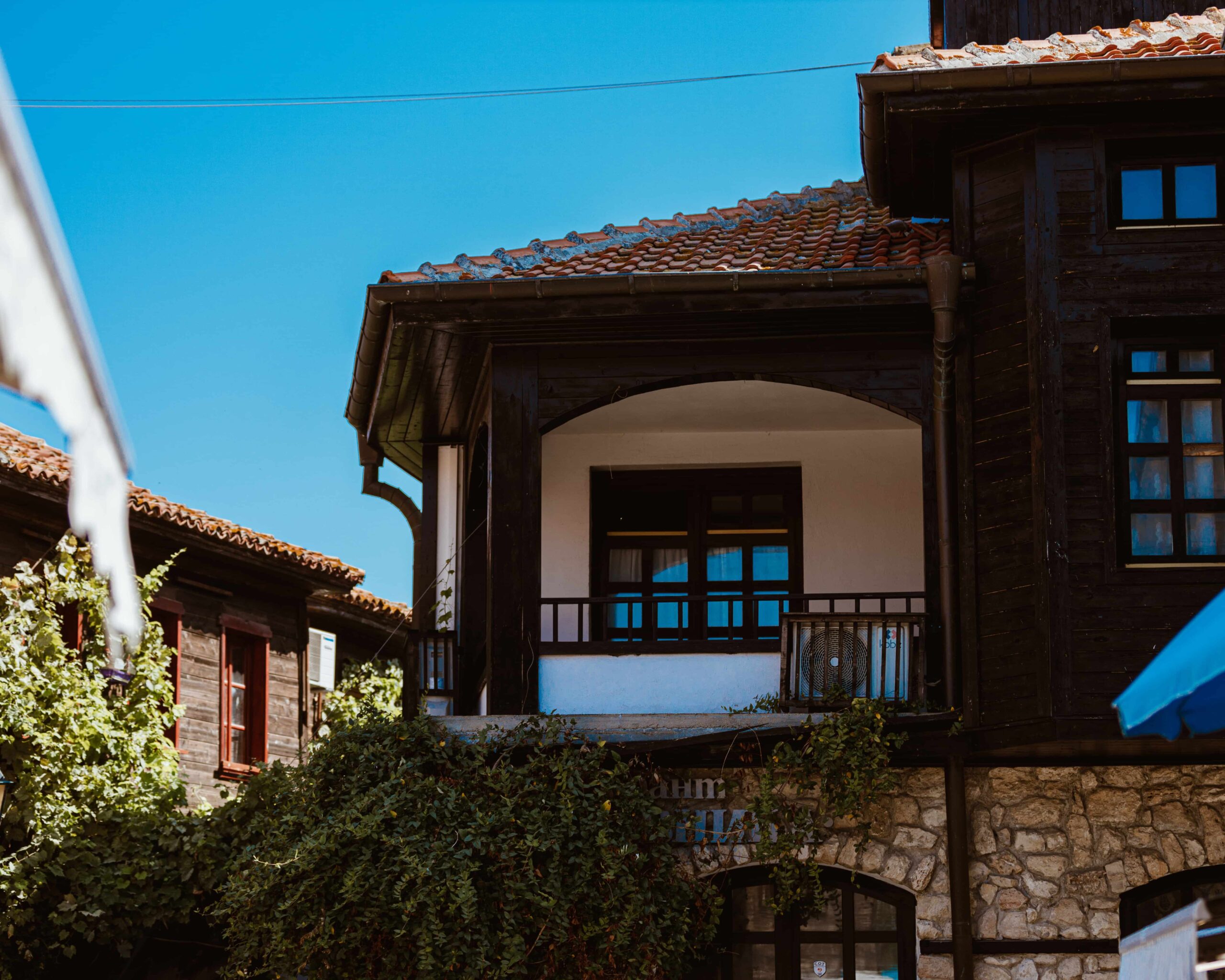
Nessebar
Nessebar is a 2500-year-old city that is also a World Heritage Site. It is a significant beach resort on Bulgaria’s Black Sea Coast, located in the Burgas Province. Nessebar, a more than 3,000-year-old landmark on a rocky peninsula on the Black Sea, was once a Thracian village (Menebria). The little city is divided into two halves by a thin man-made isthmus, with the older part of the community on the peninsula (formerly an island) and the more contemporary half (hotels, subsequent construction) on the mainland side.
Rila Monastery
The Monastery of Saint Ivan of Rila, also known as Rila Monastery “Sveti Ivan Rilski,” is Bulgaria’s largest and most well-known Eastern Orthodox monastery. It is located in the southwestern Rila Mountains, 117 kilometers south of Sofia, in the deep valley of the Rilska River, at an elevation of 1,147 meters above sea level, within the Rila Monastery Nature Park. The monastery, which houses roughly 60 monks, is named after its founder, the hermit Ivan of Rila. The Rila Monastery, founded in the 10th century, is recognized as one of Bulgaria’s most important cultural, historical, and architectural landmarks, as well as a major tourist destination for both Bulgaria and Southern Europe. It had 900,000 visitors in 2008. The monastery is pictured on the reverse of the 1999 1 lev currency. The Rila Monastery is Bulgaria’s largest and most well-known Eastern Orthodox monastery. It is located in the southern Rila Mountains and is regarded as one of Bulgaria’s most important religious, cultural, and architectural sites. It was constructed in the eleventh century and named for its discoverer, the hermit Ivan of Rila.
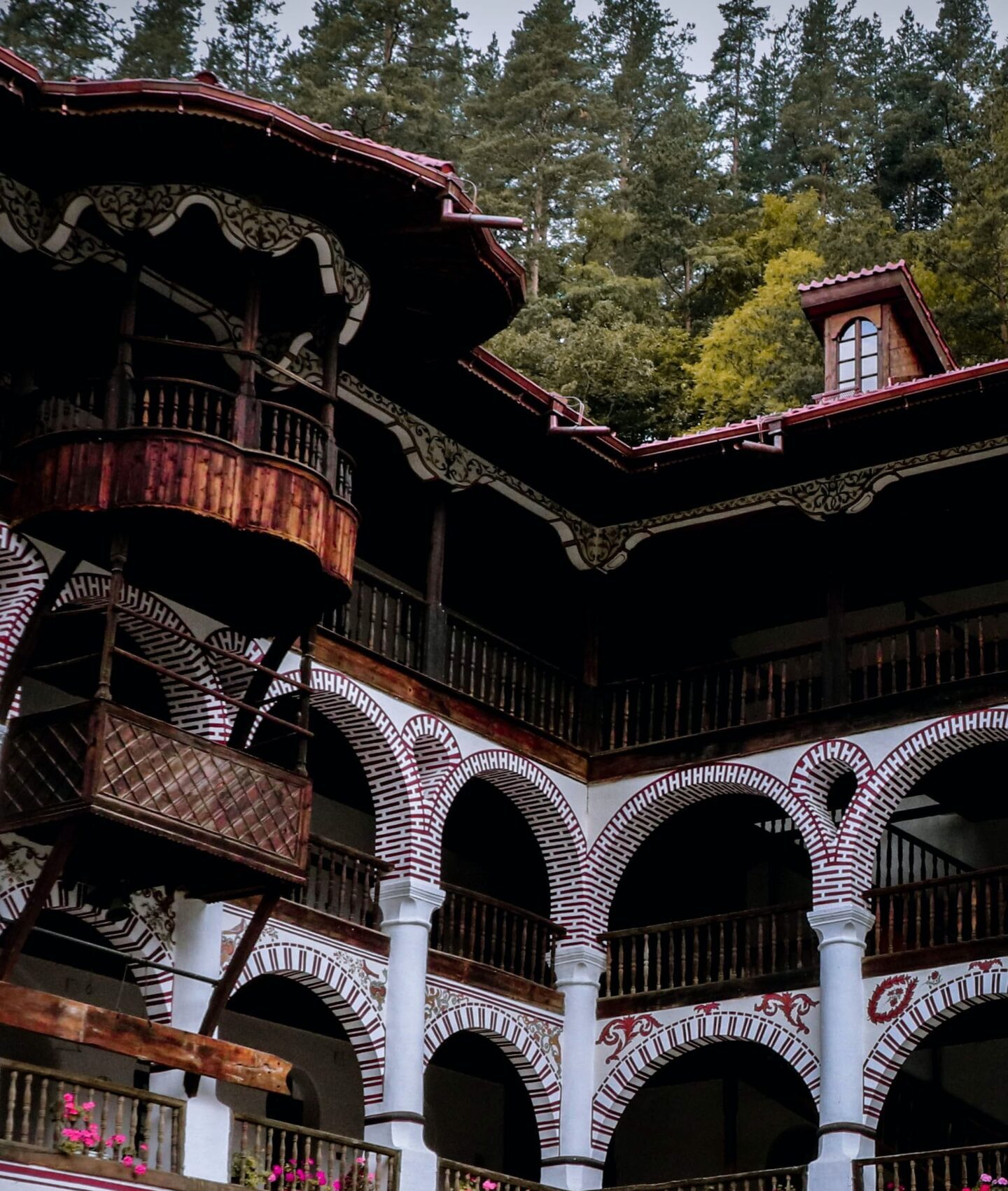

Pirin National Park
Pirin National Park, formerly known as Vihren National Park, covers the majority of the Pirin Mountains in southern Bulgaria, covering 403.56 km2. It is one of the country’s three national parks, the others being Rila National Park and Central Balkan National Park. The park was founded in 1962, and its boundaries have been enlarged multiple times since then. In 1983, UNESCO designated Pirin National Park as a World Heritage Site. Vihren, Bulgaria’s second highest peak and the Balkans’ third, with an elevation range of 950 to 2,914 meters. The park is located on the area of seven municipalities in Blagoevgrad Province, the country’s southernmost region: Bansko, Gotse Delchev, Kresna, Razlog, Sandanski, Simitli, and Strumyani. Its land has no urban areas. Bayuvi Dupki–Dzhindzhiritsa and Yulen natural reserves are located inside the limits of Pirin National Park. Bayuvi Dupki–Dzhindzhiritsa is one of Bulgaria’s oldest reserves, having been created in 1934, and is part of the World Network of Biosphere Reserves under the UNESCO Man and Biosphere Programme.
Central Mineral Baths
The Central Mineral Baths are a landmark in the city center of Sofia, Bulgaria’s capital and a city noted for its mineral springs. It was erected beside the previous Turkish spa in the early twentieth century and served as the city’s public baths until 1986. Sofia has had public baths since at least the 16th century. During his visit to Sofia in 1553–1555, Bohemian explorer Hans Dernschwam documented the presence of one great spa and two smaller baths on either side of the city. Dernschwam characterized the baths thus: The baths are placed on the plaza; there is a large quadrangular edifice in front of the entrance with a circular Greek-style dome on top, similar to the Pantheon in Rome. It’s lavishly coated in white marble… The large water conduits that feed the baths are fashioned of potter’s clay. Each tube is about one Viennese cubit long, and they all go through each other. They are plastered up, like in Siebenbürgen and in ancient Thorenburg buildings.
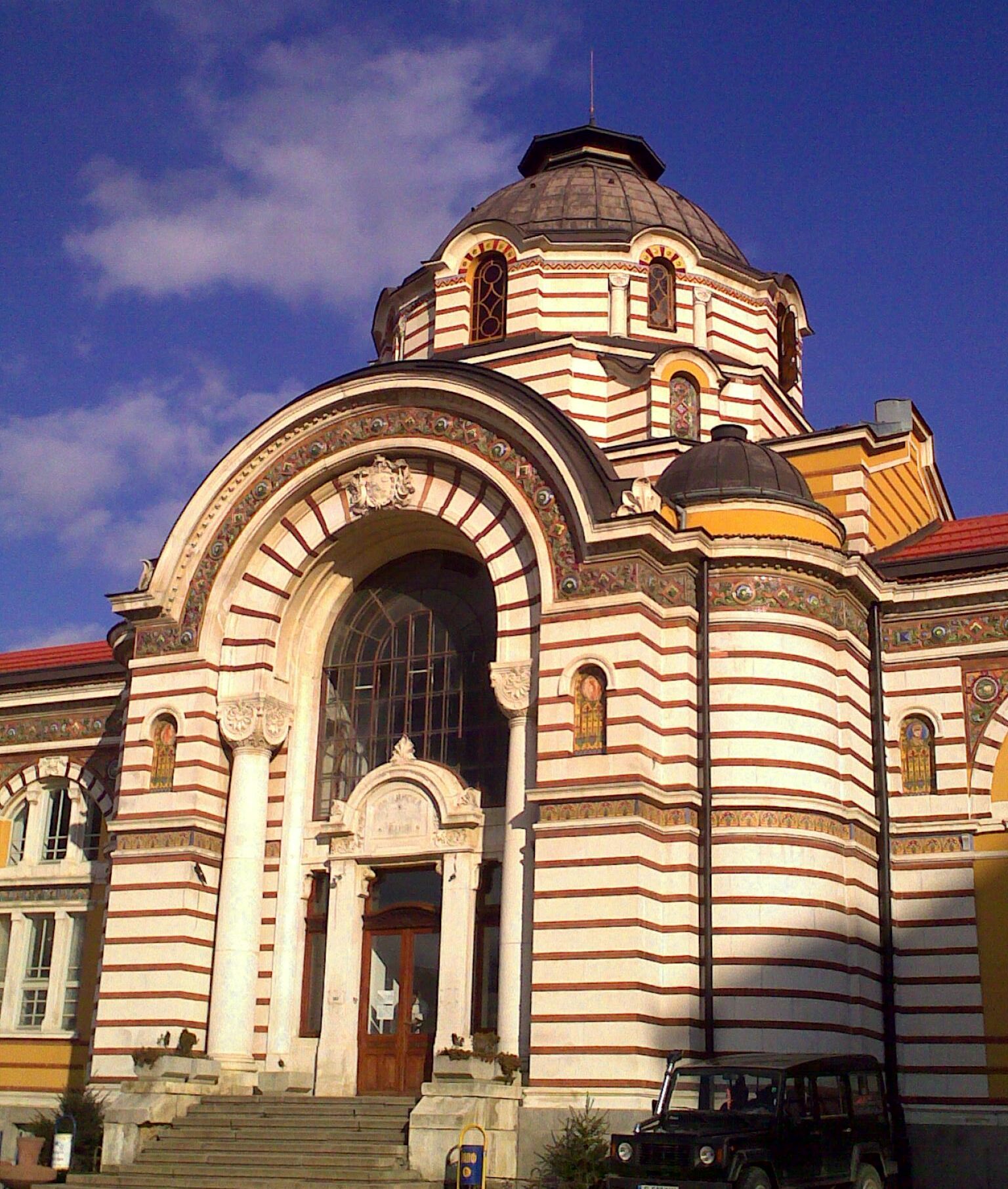
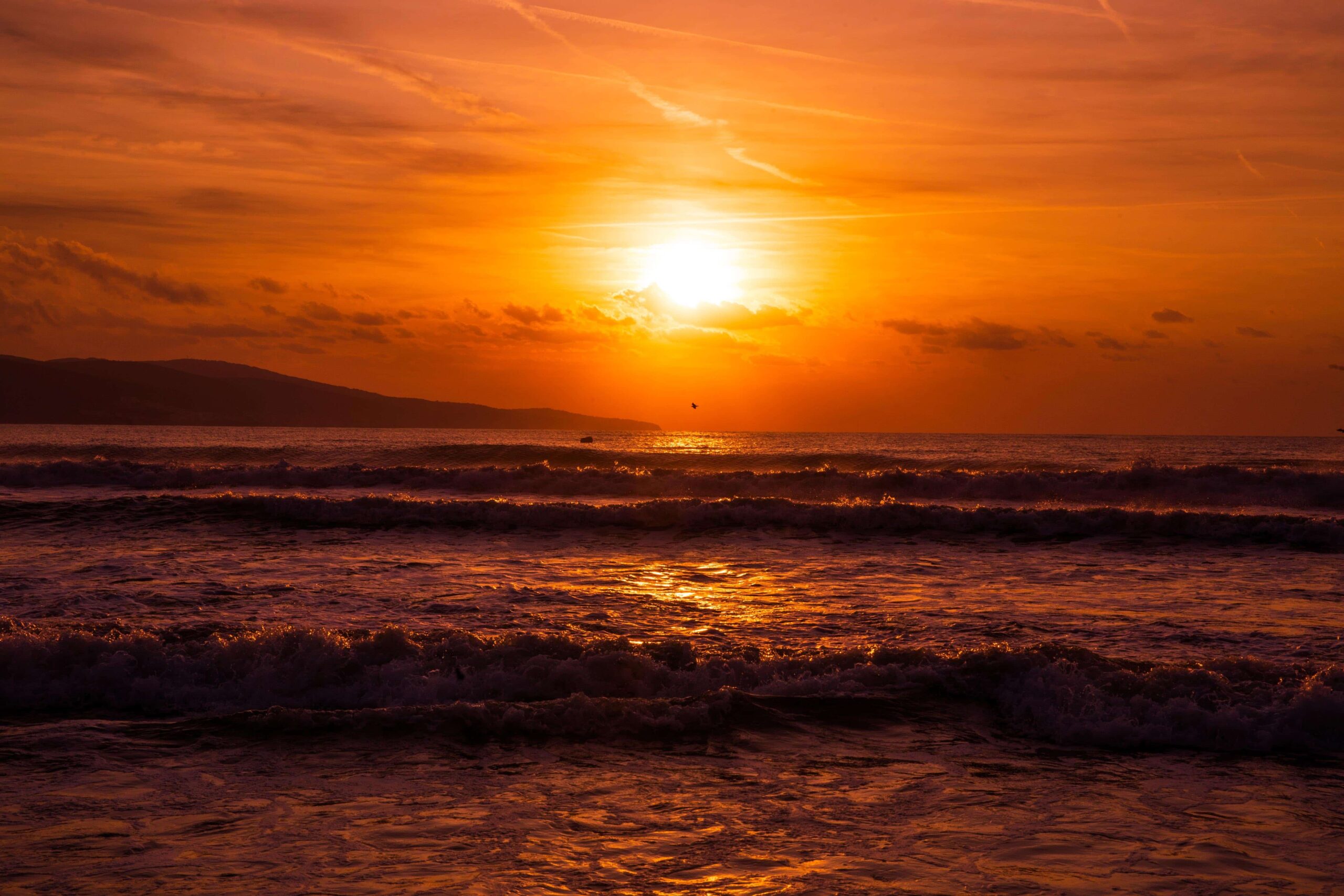
Sunny Beach
Slanchev Bryag is a popular coastal resort on Bulgaria’s Black Sea coast, some 35 kilometers north of Burgas. Originally a tiny coastal resort, it has expanded to encompass a wide range of recreational activities and services. Sunny Beach, founded in 1958 as a weekend retreat for Bulgarian families, has evolved to become the country’s most popular tourist and holiday destination. Its fast expansion has made it the largest resort on the whole Black Sea coast; to the south, the complex blended with the built-up suburbs of Nessebar.
5-day Itinerary in Bulgaria (with extension options)
Days 1 to 3
Arrive at Sofia
You will most likely begin your Bulgaria itinerary in Sofia, the country’s capital and largest city. Though Sofia may not have the best reputation among Balkan towns but leave these preconceptions behind, and you will discover that it has a lot to offer visitors with wonderful energy and many intriguing things to do.
Though you could easily spend a week or more exploring Sofia, we recommend spending three of your five days in Bulgaria in the city. There are many things to do in Sofia during these three days, including seeing major attractions such as the old city of Serdika and the Alexander Nevsky Cathedral. You may also visit some of Sofia’s numerous museums, Mosques, experience the city’s booming culinary scene, and learn more about the city’s communist heritage.

Though it is not the most gorgeous city, Sofia has a really interesting edge, and it is worth knowing about its blossoming street art culture.
If you only have three days, we recommend that you spend them all in Sofia to fully get to know the Bulgarian city. However, if you want to visit more of Bulgaria on your 5 days in Bulgaria schedule, you may embark on a day trip. The adjacent Vitosha Mountain, which can be reached by Sofia’s public transportation, is also a popular day excursion from Sofia.

Sofia has emerged as a tourist destination in recent years, and as a result, there are several lodging options available to fit every budget, from backpacker to luxury.
- Backpacker: Hostel Mostel, Hostel N°1 in Sofia, Elegance Hostel
- Budget: Hotel Bansko, Fancy Hotel, St. George
- Mid-range: Hotel Aris, L’Opera House, Hotel Sofia Place, Park Hotel Amfora, Budapest Hotel Sofia
- Luxury: Art 'Otel, All Seasons Residence Hotel, Intercontinental Sofia, Hyatt Regency Sofia
This section will be added shortly.
Days 4 to 5
Head to Plovdiv
Following your exploration of Sofia, the next stop on your 5-day Bulgaria itinerary should be Plovdiv, Bulgaria’s second-largest city. As one of the European Capitals of Culture in 2019, Plovdiv is likely Bulgaria’s most tourist-friendly city, with enough to offer visitors.
Plovdiv is claimed to be Europe’s oldest continuously inhabited city, stretching back over 6,000 years. Plovdiv is well known for its magnificent historic amphitheatre. There is a lot more to see and do in Plovdiv, which is why we recommend staying for two days to fully get to know the city.
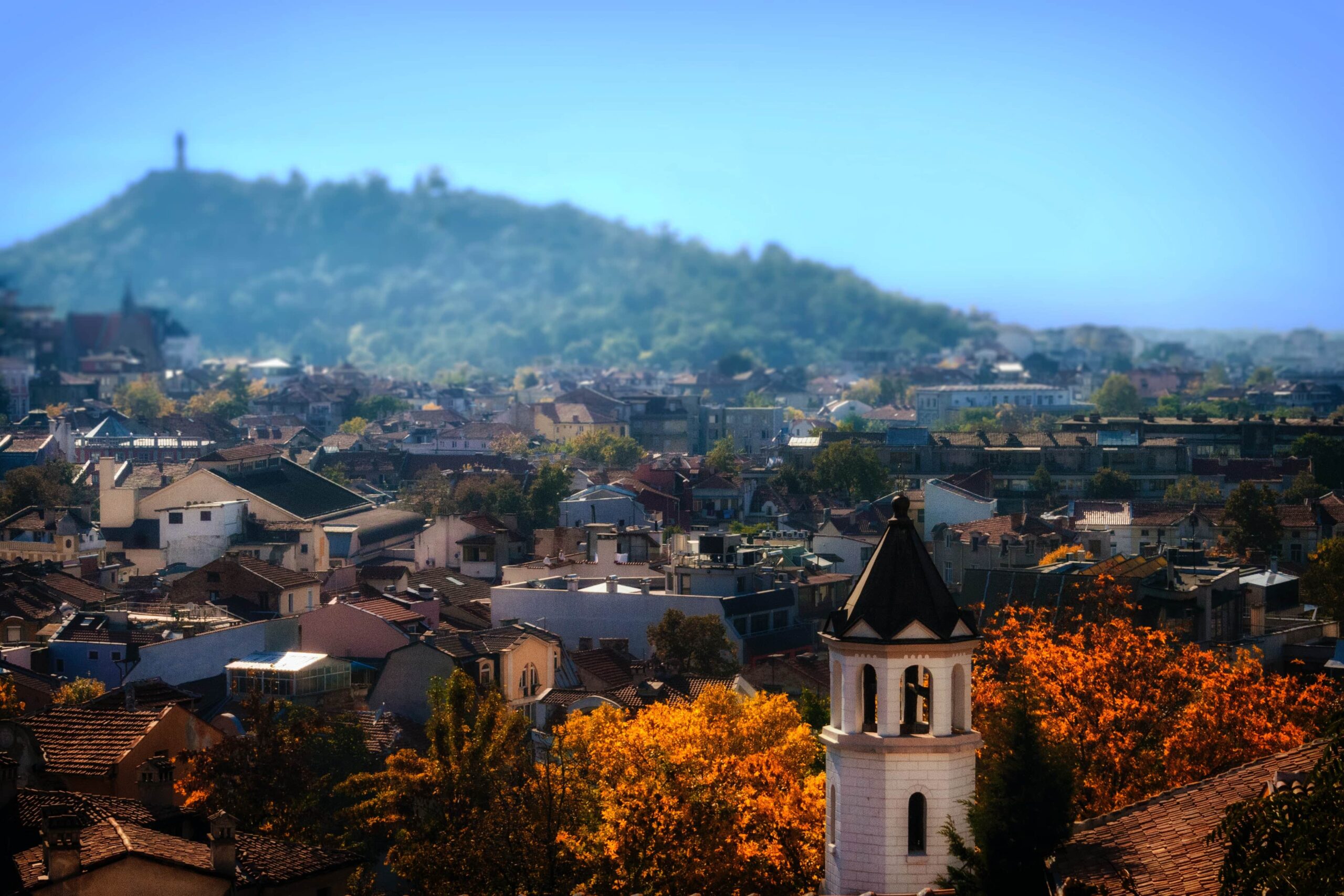
Spend your first day in town touring the city’s historic structures, such as the aforementioned amphitheatre and old stadium. Wander around the lovely ancient town and admire the city from the ruins of Nebet Tepe.
You may also visit the fashionable Kapana neighborhood, which translates to “The Trap” in Bulgarian. These winding, pedestrian lanes have recently been rebuilt thanks to significant government investment and are now home to a plethora of fantastic restaurants, cafés, pubs, and independent stores, as well as a sanctuary for local artists. This is the neighborhood to visit if you are interested in hipster culture or street art.
Plovdiv is also a good starting point for wine tasting tours in the Thracian valley. Brestovitsa, a neighbouring village with roughly 7 vineyards, is only 20 kilometers from Plovdiv’s center. Though Bulgaria may not be the first nation that comes to mind when thinking about wine tourism, it boasts one of the world’s oldest viticultures and produces some genuinely exceptional vintages.
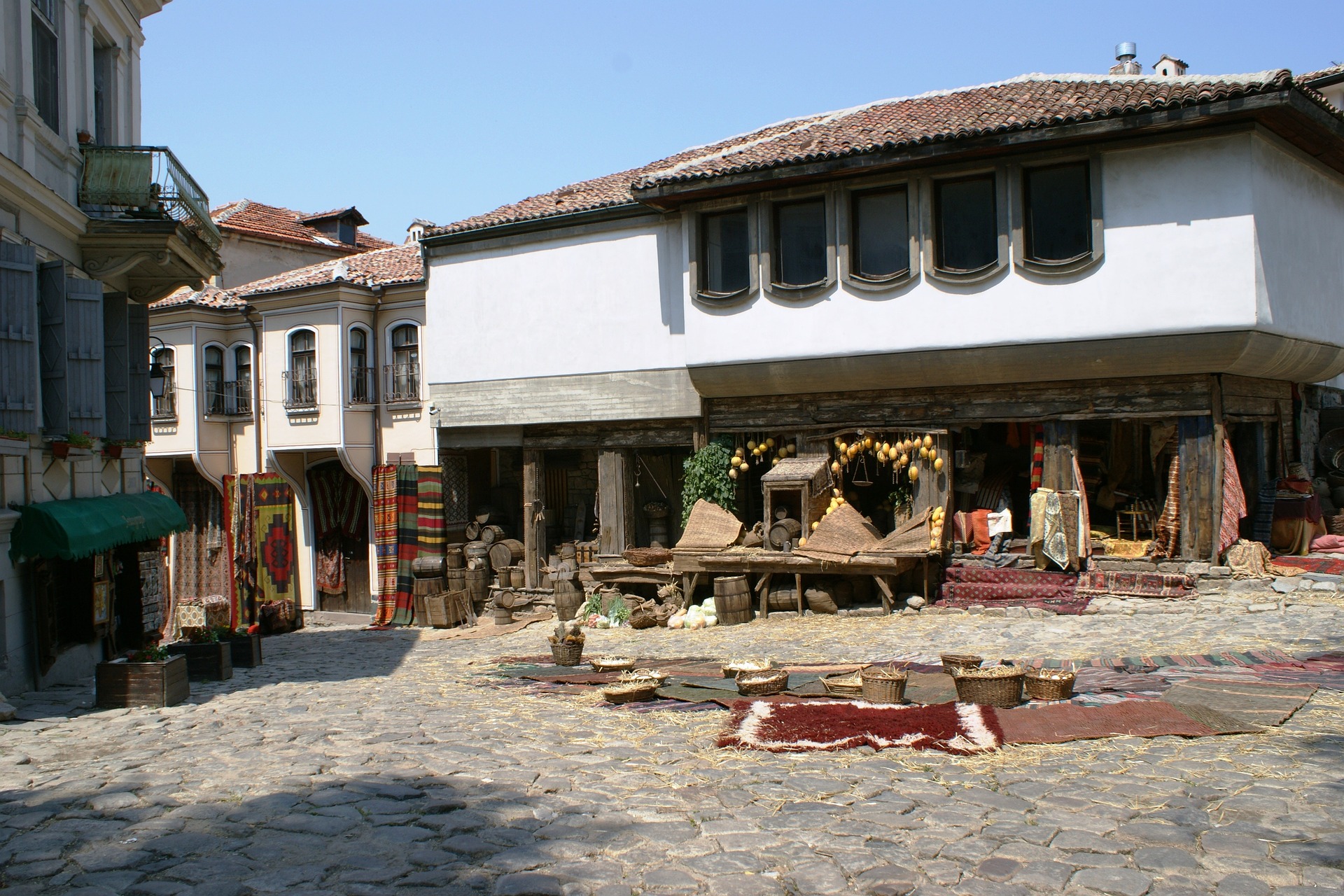

Plovdiv may not receive as many visitors as Sofia, but it is still a popular stop on most Bulgaria itineraries, so there are plenty of fantastic places to stay. If you're looking for a place to stay in Plovdiv, consider these options:
- Budget: Noviz Hotel, Hotel Alians
- Mid-range: Hostel Old Plovdiv, Hotel Evmolpia, Landmark Creek Hotel, Holiday Inn Plovdiv
- Luxury: Hotel Imperial, Hotel Gallery 37, The Emporium Plovdiv
This section will be added shortly.


Extra Days in Bulgaria (Option 1)
Veliko Tarnovo
If you’re planning your Bulgaria itinerary outside of the summer months or prefer mountain cities to coastal escapes, then spending the last two days in Veliko Tarnovo is a terrific alternative to the Black Sea coast.
Veliko Tarnovo, located in northern Bulgaria, is a vibrant university town that was previously the country’s capital. It is now recognized for its alpine landscape and towering fortification, which commands spectacular views of the city and surrounding mountains.
Veliko Tarnovo is breathtakingly beautiful and definitely worth exploring on foot for a day or two. It is also quite close to a number of fantastic mountains, so you can use the city as a base to go on a nice day trek. As a previous Bulgarian capital and another historic city, Sofia has a lengthy and intriguing history that is worth studying about.
As the home of one of Bulgaria’s greatest universities, there is also a dynamic, young spirit that leads to a plethora of superb restaurants, pubs, and cafés, as well as some fashionable stores and activities.
Veliko Tarnovo is a popular destination for anyone staying in Bulgaria for more than a couple of days, so there are plenty of decent places to stay.
- Backpacker: Hostel Mostel, Hikers Hostel, Diana Guesthouse, Rooster Hostel, Tarnovski Dom Hotel
- Budget: Guest house Malkia, Guest House Selin, Guest House Astra, Hotel Bela Neda
- Mid-range: Park Hotel Arbanassi, The Lions Residence, Guest Rooms Cheshmata, The Hill, Hotel Izvora, The Complex Arbanashki Han
- Luxury: Bey House Boutique Hotel, Vitality Guest House
This section will be added shortly.
Extra Days in Bulgaria (Option 2)
Indulge the Black Sea
After five days in Sofia and Plovdiv, it’s time to drive to the coast and enjoy the beautiful Black Sea.
There are a variety of wonderful sites to explore along Bulgaria’s lengthy coastline, depending on the type of experience you seek. If you’re looking for a smaller, more tranquil coastal village, come to Sozopol. This village has two gorgeous sand beaches, charming cobblestone streets, and a relaxed attitude.
If you prefer more western facilities, a party scene, or a high-end beach resort, visit Sunny Beach or Nessebar, which are far more touristic and developed than Sozopol. But bear in mind that Sozopol is a beautiful place with yet another old town to feast your eyes with.
If you want a big city atmosphere but still some fantastic beach time, travel to Varna or Burgas, Bulgaria’s largest cities on the coast. No matter where you go, you’re guaranteed to have a good time experiencing the Black Sea’s beauties.

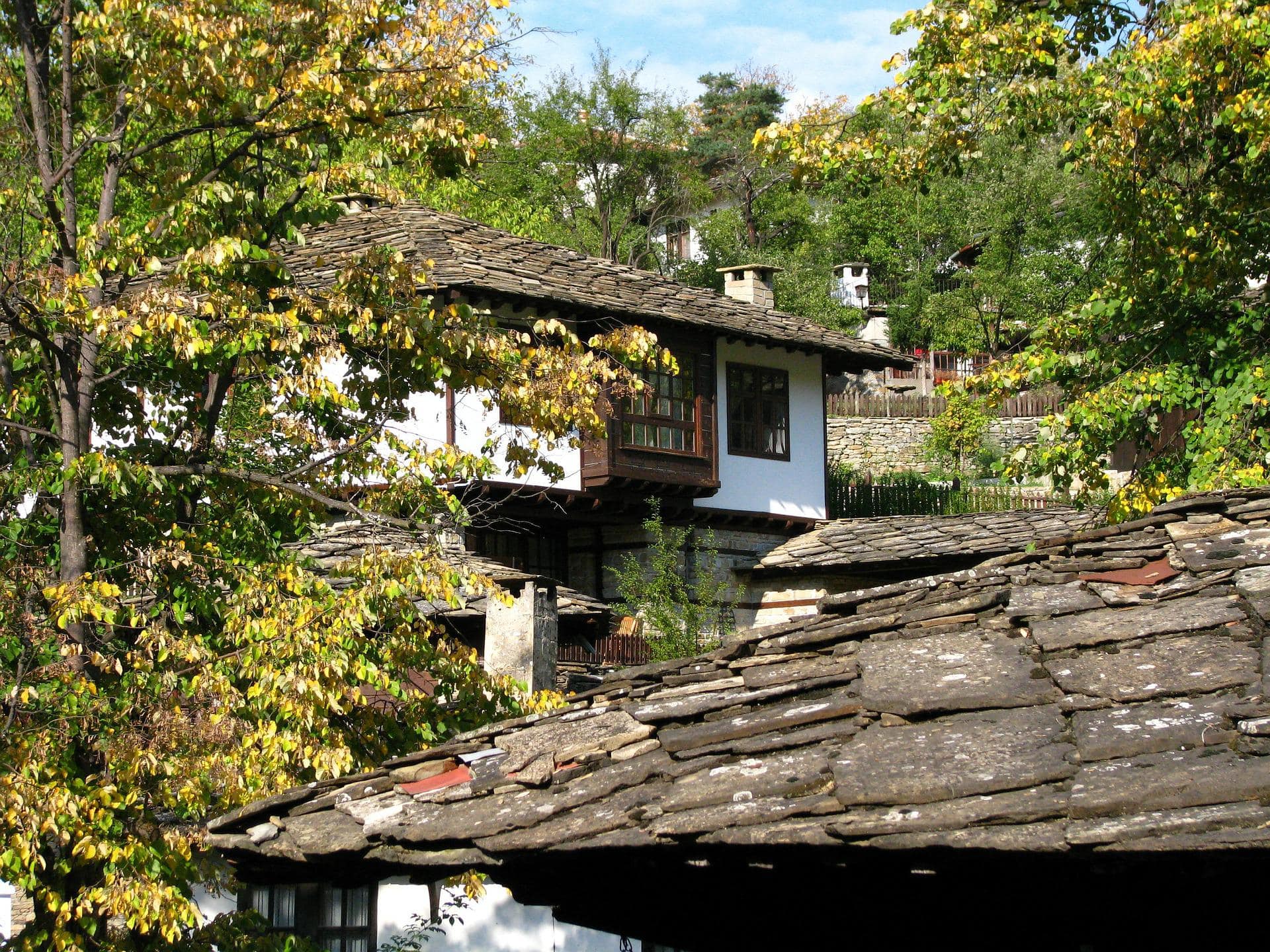
The Black Sea Coast in Bulgaria is quite popular during the summer months, and there are various cities to pick from. We recommend Sozopol for a laid-back attitude, or Varna if you want to experience Bulgaria's third-biggest city.
- Backpacker: M Hostel Musala
- Budget: Vezhen Hotel, Kalimera, Ecoclub
- Mid-range: Villa Climate Guesthouse, Ivanchov Han, Hotel Ventura, Hotel Belle Epoque Beach, Modus Hotel, Hotel Diamanti
- Luxury: Primorski Hotel, Dallas Residence Hotel, Oasis Botique Hotel, Melia Grand Hermitage
This section will be added shortly.
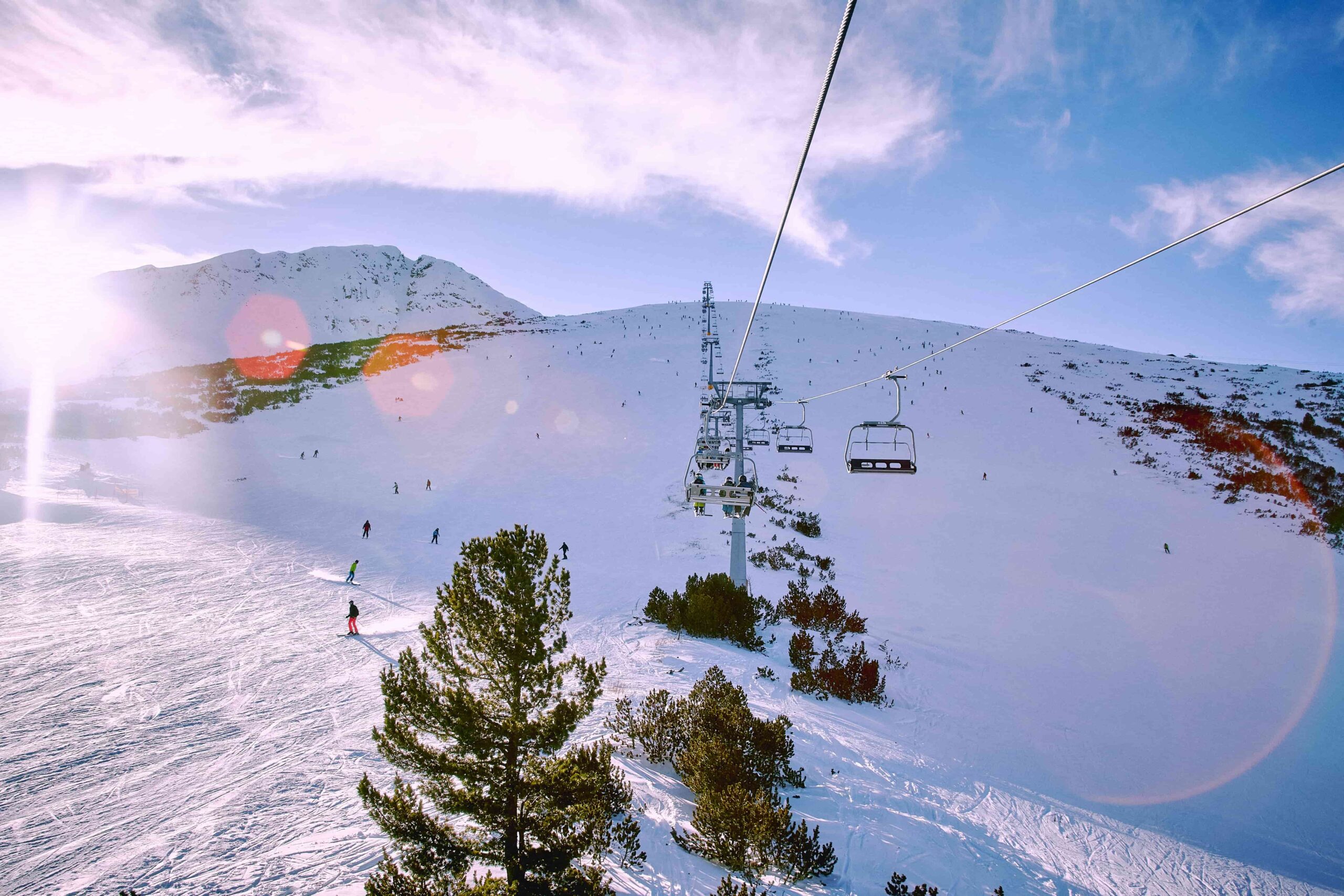
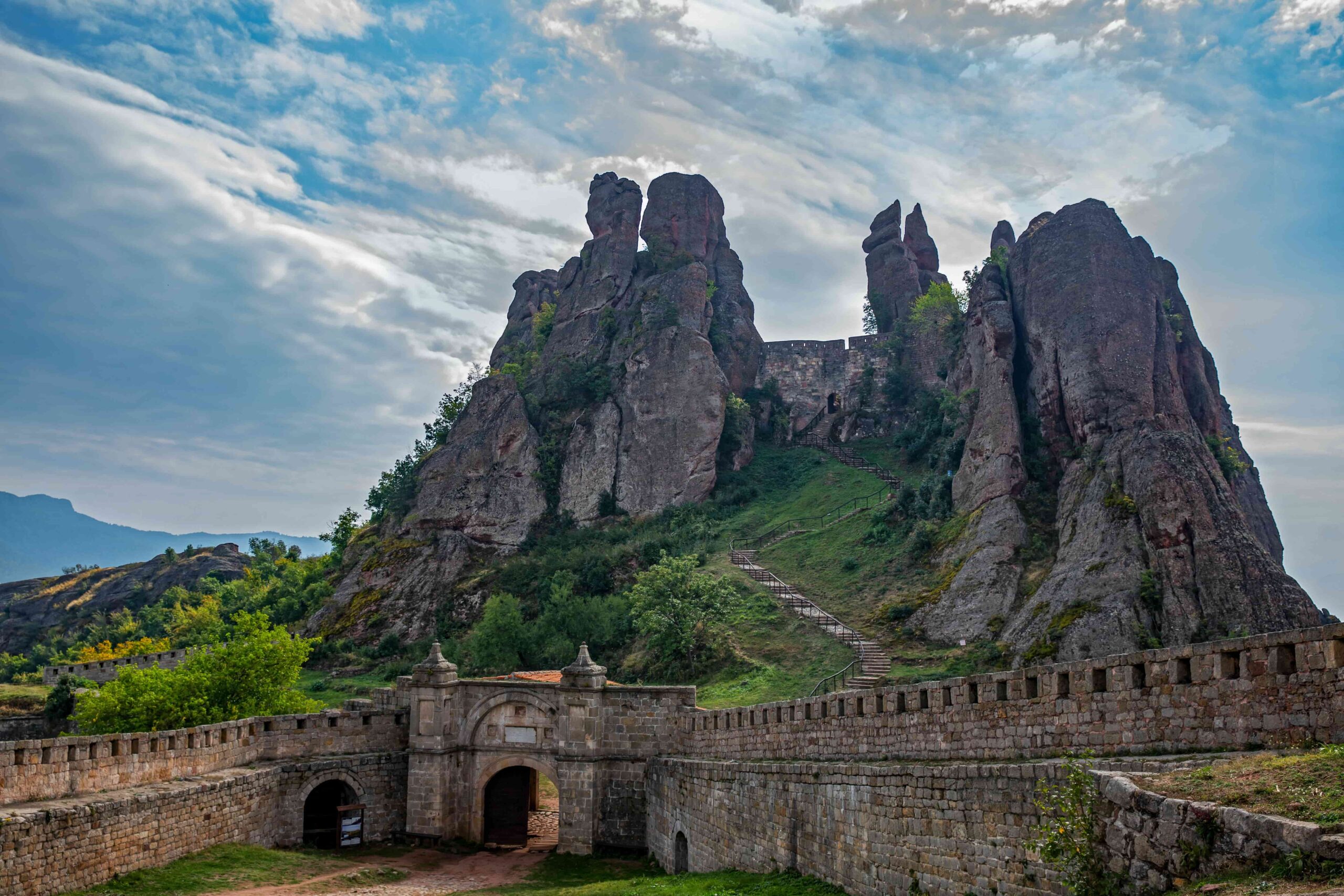
Day 5
Departure Day
This is the final day of your Bulgaria trip itinerary. Unless, of course you want to add more days. If you want to add extra days to your vacation or try something new, you can choose one of the following.
If you want to experience some of Europe’s greatest and most cheap skiing in the winter or visit a pristine hiking destination in the summer, Bansko is a perfect addition to any Bulgaria itinerary.
Finally, the northern village of Belogradchik on the Serbian border is an excellent off-the-beaten-path trip in Bulgaria. Spending a day or two here will show you a distinct aspect of the nation, thanks to its unusual rock formations and formidable stronghold.

If this is not the case, you will most likely be traveling to Sofia airport, where you will prepare your belongings, double-check that you have everything, check out, and make your way to the airport.
While on your way, you will see the country’s streets one more time and bid them farewell. We hope you had a good time on your trip to Bulgaria.
The Most Popular Food in Bulgaria
Bulgarian salads are incredibly fresh. They include cucumbers, tomatoes, feta cheese, and a variety of other vegetables, but rarely have lettuce. The dressing is usually made from either sunflower or olive oil and flavored slightly with vinegar. Although somewhat comparable to Greek salads, Shopska salads typically have a subtly different flavor. What makes this different you ask? Bulgarian white cheese, or ‘sirene’, is grated on top of the veggies, giving the salad its inimitable flavor and is what makes the salad taste so good!

Shopska Salad
Salads in Bulgaria are wonderfully fresh. Cucumbers, tomatoes, feta cheese, and a variety of other vegetables are often used, although lettuce is rarely included. The dressing is often created with sunflower or olive oil and is gently seasoned with vinegar. Although similar to Greek salads, Shopska salads have a somewhat distinct flavor. What makes this unique, you ask? Bulgarian white cheese, or’sirene,’ is grated on top of the vegetables, giving the salad its distinct flavor and making it taste so fantastic!

Meshana Skara
Meshana skara, commonly known as mixed grill, is a traditional Bulgarian meal consisting of a plate of meat and vegetables. On the platter, place one kyufte, one pork steak, one kebapche, and one pig skewer. The meat is usually served with french fries, lyutenitsa, and onion-flavored bean salad. It is typically accompanied by a couple of glasses of beer and rakia.

Bob Chorba
This mint and herb soup is often served warm. It is considered a Bulgarian national dish, however it is prepared in a variety of forms around the country. It is often cooked with beans and onions.
Bob chorba is a Bulgarian soup made with white and kidney beans, onions, peppers, tomatoes, carrots, and mint. The soup may be made with practically any available item, including bell peppers, paprika, potatoes, and meat.
The bob chorba po manastirski, a monastery-style variant of this soup that was served in several Bulgarian monasteries and is totally vegetarian, is very popular. This simple soup is a national dish of Bulgaria, and its vegetarian variant is typically served on Christmas Eve.

Drob Po Selski
Drob po selski, or village-style liver, is a traditional Bulgarian meal created by boiling liver in a clay earthenware pot with vegetable pieces and (optionally) mushrooms. Pieces of chicken, beef, or hog liver are roasted with onions, carrots, peppers, garlic, tomatoes, and mushrooms before being boiled with water and flour.
Wine, tomato purée, and spices are frequently used to enhance the flavor of the meal. In Bulgaria, the dish is a common lunch or supper dish, generally topped with freshly cut parsley and served with pieces of baked bread on the side.
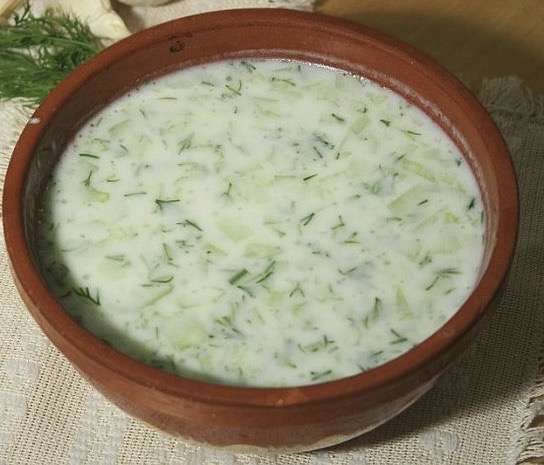
Tarator
This is a cucumber and yogurt soup often served cold. It often combines walnuts, dill, garlic and vegetable oil and is most frequently served during the warmer summer months.
What's the Travel Budget for Bulgaria?
Flights
- Flights start at roughly $130 from nearby countries. Tickets however on average cost around $650 and can cost way more depending on which class and from which country you depart from.
Accommodation
- Nomad Backpacking style travelers can expect to spend around $110 for a week
- Budget travelers can expect to spend around $275 for a week
- Mid-range travelers can expect to spend around $450 for a week
- Luxury travelers can expect to spend around $1,120 for a week
Food Budget (Three meals and drinks)
- Nomad Backpacking style travelers can expect to spend around $10 per person per day
- Budget travelers can expect to pay around $16 per person per day
- Mid-range travelers on average would cost $20 to $35 per person per day
- Luxury travelers can expect to pay around $40 to $55 per person per day
Overall Budget Styles (Not including Flights, Tours, Transportation, or Car Rental)
- Nomad Backpacking style travelers can expect to spend roughly $200 for a week
- Budget travelers can expect to spend close to $390 for one person for a week
- Mid-range travelers can expect to spend approximately $720 for one person for a week
- Luxury travelers can expect to spend around $1,630 for one person for a week
Flights
- Flights start at roughly $130 from nearby countries. Tickets however on average cost around $650 and can cost way more depending on which class and from which country you depart from.
Accommodation
- Nomad Backpacking style travelers can expect to spend around $110 for a week
- Budget travelers can expect to spend around $275 for a week
- Mid-range travelers can expect to spend around $450 for a week
- Luxury travelers can expect to spend around $1,120 for a week
Food Budget (Three meals and drinks)
- Nomad Backpacking style travelers can expect to spend around $10 per person per day
- Budget travelers can expect to pay around $16 per person per day
- Mid-range travelers on average would cost $20 to $35 per person per day
- Luxury travelers can expect to pay around $40 to $55 per person per day
Overall Budget Styles (Not including Flights, Tours, Transportation, or Car Rental)
- Nomad Backpacking style travelers can expect to spend roughly $200 for a week
- Budget travelers can expect to spend close to $390 for one person for a week
- Mid-range travelers can expect to spend approximately $720 for one person for a week
- Luxury travelers can expect to spend around $1,630 for one person for a week
Flights
- Flights start at roughly $130 from nearby countries. Tickets however on average cost around $650 and can cost way more depending on which class and from which country you depart from.
Accommodation
- Nomad Backpacking style travelers can expect to spend around $110 for a week
- Budget travelers can expect to spend around $275 for a week
- Mid-range travelers can expect to spend around $450 for a week
- Luxury travelers can expect to spend around $1,120 for a week
Food Budget (Three meals and drinks)
- Nomad Backpacking style travelers can expect to spend around $10 per person per day
- Budget travelers can expect to pay around $16 per person per day
- Mid-range travelers on average would cost $20 to $35 per person per day
- Luxury travelers can expect to pay around $40 to $55 per person per day
Overall Budget Styles (Not including Flights, Tours, Transportation, or Car Rental)
- Nomad Backpacking style travelers can expect to spend roughly $200 for a week
- Budget travelers can expect to spend close to $390 for one person for a week
- Mid-range travelers can expect to spend approximately $720 for one person for a week
- Luxury travelers can expect to spend around $1,630 for one person for a week
Flights
- Flights start at roughly $130 from nearby countries. Tickets however on average cost around $650 and can cost way more depending on which class and from which country you depart from.
Accommodation
- Nomad Backpacking style travelers can expect to spend around $110 for a week
- Budget travelers can expect to spend around $275 for a week
- Mid-range travelers can expect to spend around $450 for a week
- Luxury travelers can expect to spend around $1,120 for a week
Food Budget (Three meals and drinks)
- Nomad Backpacking style travelers can expect to spend around $10 per person per day
- Budget travelers can expect to pay around $16 per person per day
- Mid-range travelers on average would cost $20 to $35 per person per day
- Luxury travelers can expect to pay around $40 to $55 per person per day
Overall Budget Styles (Not including Flights, Tours, Transportation, or Car Rental)
- Nomad Backpacking style travelers can expect to spend roughly $200 for a week
- Budget travelers can expect to spend close to $390 for one person for a week
- Mid-range travelers can expect to spend approximately $720 for one person for a week
- Luxury travelers can expect to spend around $1,630 for one person for a week
If you want to know what to pack, read this list below:
- This is a casual European country that can get extremely hot or too rainy, dress accordingly
- Raincoat or Light Waterproof Jacket
- Hiking Boots or Sturdy Sneakers (Shoes You Don’t Mind Getting Wet)
- Sunscreen
- Insect Protection – Repellent and Clothing
- Sunglasses and Sun Hat
- Water Shoes
- Beach Towels/Sarong
- Dry Bag
- Money Belt or Cross Bag
- Portable Medical Kit
- Flashlight or Headlamp
- Copies of your passport.
- Get all the needed vaccinations before traveling
- A power bank is a must in any travel.
- Always have some cash with you just in case there are no ATMs and if you are dealing with a business that solely accepts cash
- Get yourself an adapter for your gadgets
- 1 toothbrush
- 1 tube of toothpaste
- 1 razor
- 1 package of dental floss
- 1 small bottle of shampoo
- 1 small bottle of shower gel
- 1 towel
- Deodorant
- Band-Aids
- Hydrocortisone cream
- Antibacterial cream
- Earplugs
- Tylenol
- Hand sanitizer (germs = sick = bad holiday)
- A key or combination lock
- Zip-lock bags
- Plastic bags (great for laundry)
- Universal charger/adaptor
- LifeStraw (A water bottle with a purifier)
- 1 dry shampoo spray & talc powder
- 1 hairbrush
- Makeup you use
- Hairbands & hair clips
- Feminine hygiene products
Clothing For Boys
- 1 pair of jeans or khaki pants
- 1 pair of shorts
- 1 bathing suit
- 5 T-shirts
- 1 long-sleeved T-shirt
- 1 pair of flip-flops
- 1 pair of sneakers
- 6 pairs of socks
- 5 pairs of boxer shorts
Clothing For Girls
- 1 swimsuit
- 1 sarong
- 1 pair of stretchy jeans
- 1 pair of leggings
- 2-3 long-sleeve tops
- 2-3 T-shirts
- 3-4 spaghetti tops
- 1 light cardigan
Want to plan your own trip, here are some of the best resources that can help you
- Skyscanner – They search small websites and budget airlines that larger search sites tend to miss. They are hands down the number one place to start.
- Momondo – This is another favorite flight search engine because they search such a wide variety of sites and airlines. Always check here too.
- Booking.com – The best all-around booking site that constantly provides the most affordable and lowest rates. They have the widest selection of budget accommodation.
- Couchsurfing – This website allows you to stay on people’s couches or spare rooms for free. It’s a great way to save money while meeting locals who can tell you the ins and outs of their city. The site also lists events you can attend to meet people (even if you’re not staying with someone).
- Intrepid Travel – If you want to do group tours, go with Intrepid. They offer good small group tours that use local operators and leave a small environmental footprint.
- Grassroots Volunteering – For volunteering, Grassroots Volunteering compiles a list of good local volunteer organizations that keep the money within the community.
- Get Your Guide – Get Your Guide is a huge online marketplace for tours and excursions. They have tons of tour options available in cities all around the world, including everything from cooking classes, walking tours, street art lessons, and more! It has the world’s largest collection of things to do with more than 30,000 activities in 7500 destinations.
- SafetyWing – Safety Wing offers convenient and affordable plans tailored to digital nomads and long-term travelers. They have cheap monthly plans, great customer service, and an easy-to-use claims process that makes it perfect for those on the road.
- Trip Advisor: Check the reviews and then book your accommodation. TripAdvisor is where you go when you want to compare prices with multiple accommodation providers.
- VRBO: is the main search engine to use when you are looking for a home or apartment rental. It can sometimes be cheaper than hotels and it is the best way to stay in areas that offer a more local feel.
- Hostelworld: With one of the largest databases of hostels in the world, Hostelworld is the go-to site when you are looking for budget accommodation.
- Rome 2 Rio: If you want to see how to get somewhere by plane, train, bus, ferry, or car Rome2Rio lays it all out for you as well as related costs.
- World Nomads Insurance: When traveling you should always have travel insurance. We have found the best bang for your buck is by far World Nomads.
Final Thoughts on Bulgaria
Bulgaria offers an intricate and rich Balkan heritage that is visible throughout the country, with its empire past, earlier occupations, marvelous and unique Islamic and orthodox structures, warm hospitality, and majestic nature making it especially alluring and picturesque as a result of this blend. Bulgaria is thus a destination worth visiting. The splendor of Bulgari is amazing, from its wonderful national parks, natural treasures, and breathtaking vistas. Would you visit Bulgaria?
Have you ever been to Bulgaria? Please share your experience in the comments area below.